Dashi is the secret weapon in Japanese cuisine that gives dishes their signature umami flavor. In this guide, I’ll show you why I recommend making this simple Japanese soup stock and share three easy ways to prepare it at home.
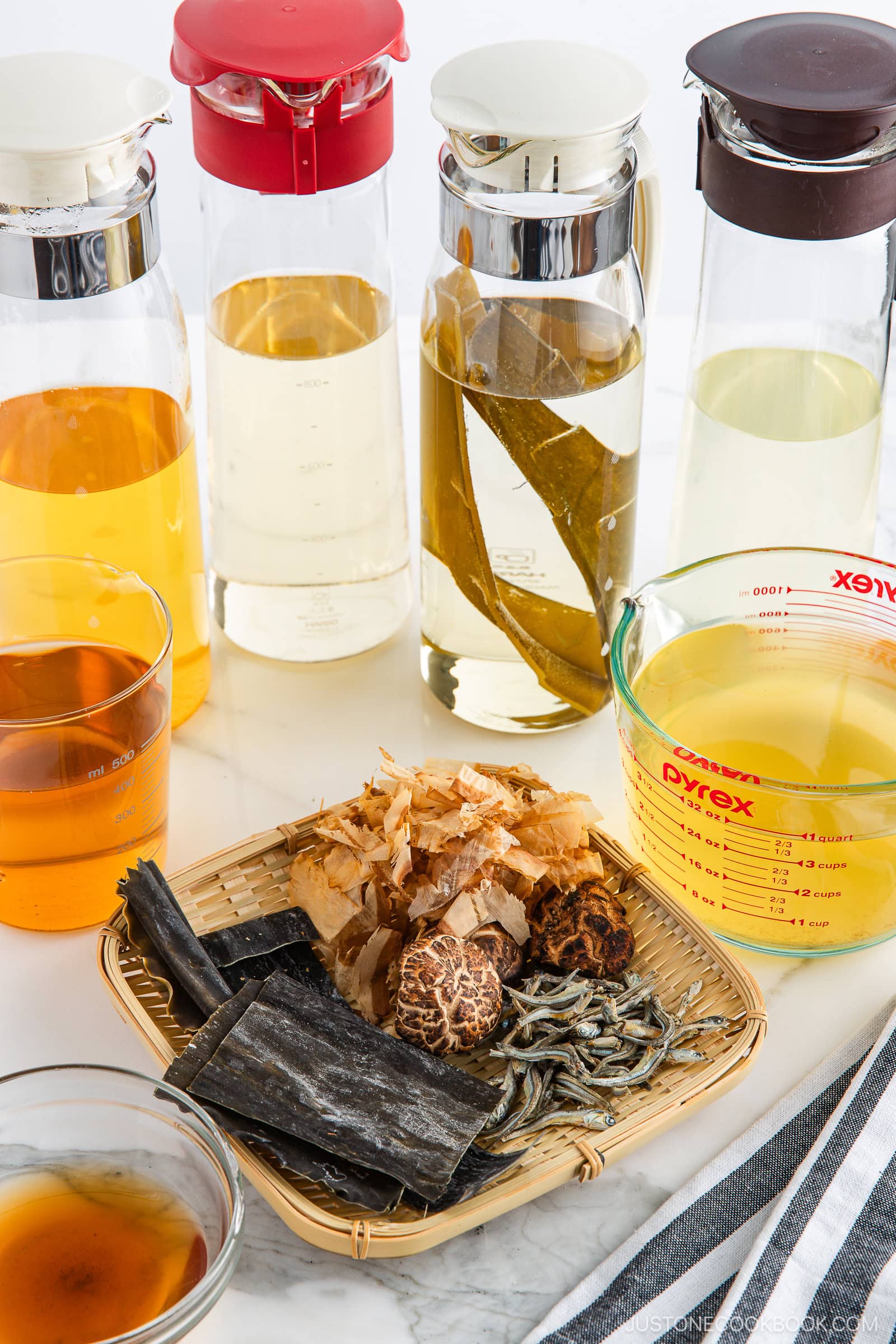
Have you ever wondered what gives Japanese dishes their signature taste—that deep, comforting, and savory flavor? That’s right, it’s dashi! This simple Japanese soup stock is the hidden layer of umami in miso soup, noodle broths, and simmered dishes. In this guide, I’ll share why I love this star ingredient and three easy ways to make it in your kitchen.
Dashi is one of my five secrets to Japanese cooking. Read about the other four secrets next!
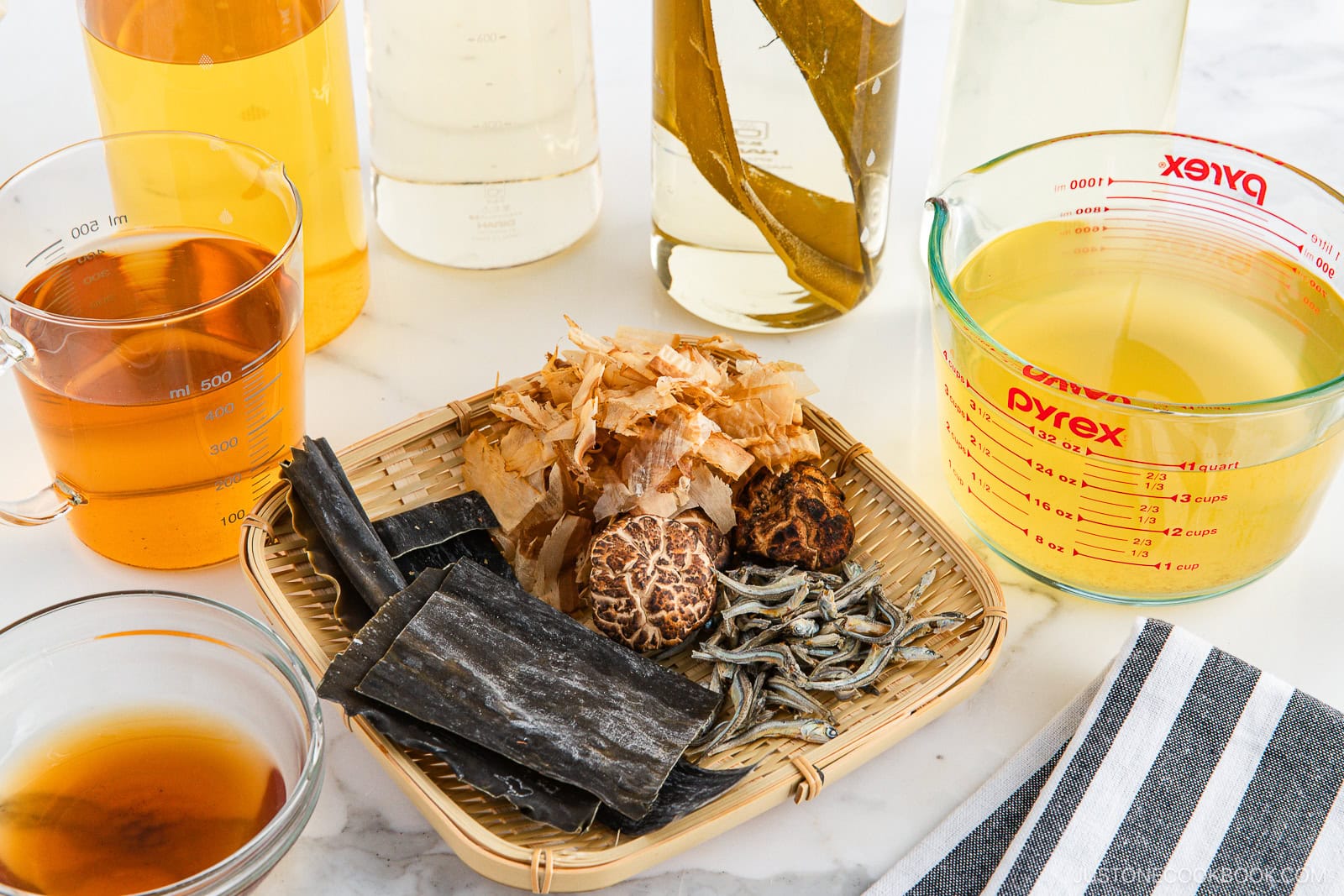
What is Dashi?
Dashi (だし, 出汁) is Japanese soup stock that’s the foundation of traditional Japanese dishes and authentic flavor. There are different types to suit the dish you’re making and your dietary needs. It’s made from water plus one or two umami-packed ingredients like kombu (dried kelp), katsuobushi (dried bonito flakes), dried shiitake mushrooms, and/or iriko (dried anchovies/sardines). With a quick prep time, it’s the easiest soup stock to make from scratch.
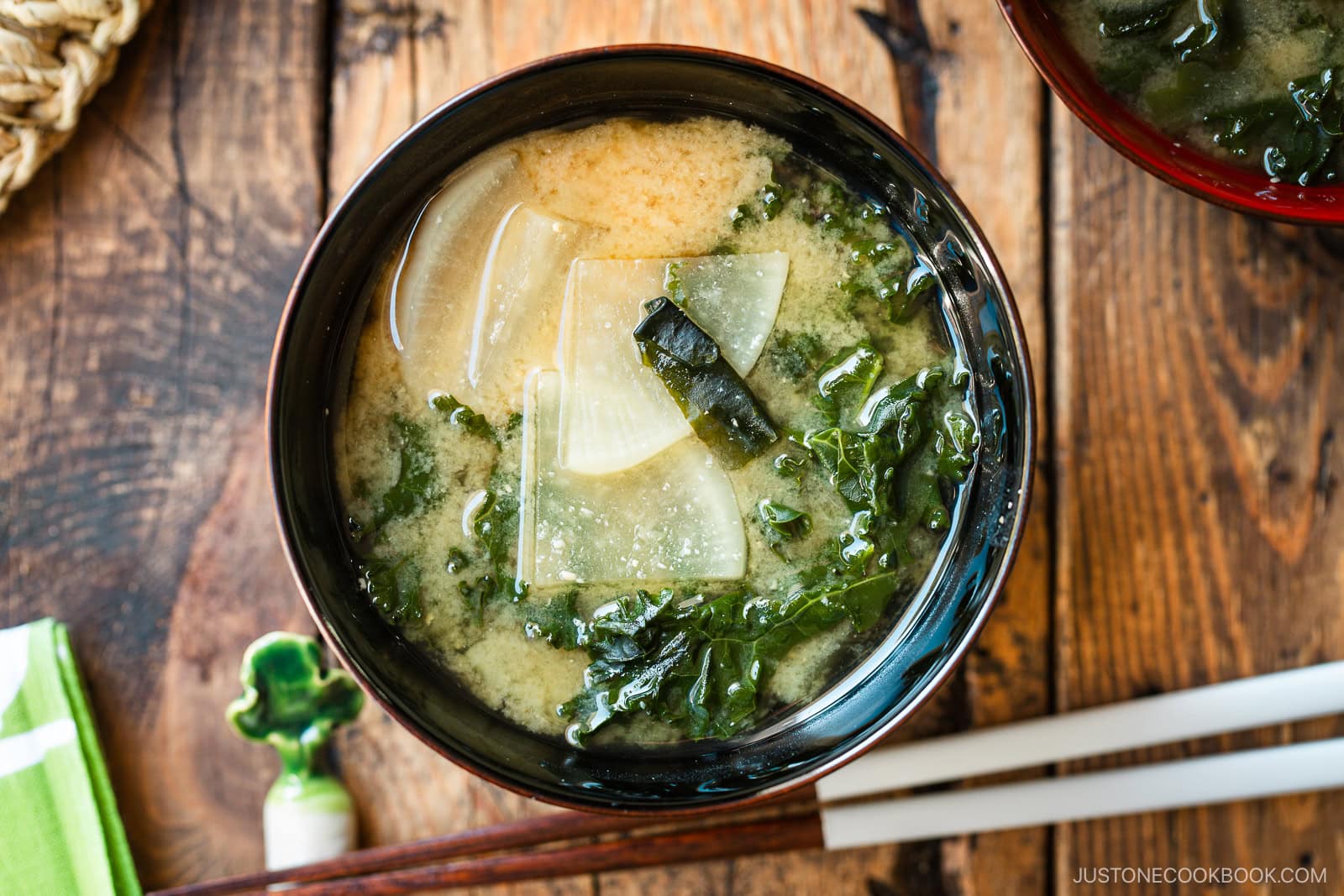
When to Use Japanese Soup Stock
- In soups like homemade miso soup for an authentic umami flavor.
- As a broth base for Japanese hot pots like mille-feuille nabe, stews like oden, noodle soups like soba and udon, and simmered dishes.
- As seasoning for Japanese rolled omelette, takoyaki, and mixed rice like takikomi gohan.
- In sauces like tempura dipping sauce for a touch of clear liquid that adds a savory depth and subtle aroma.
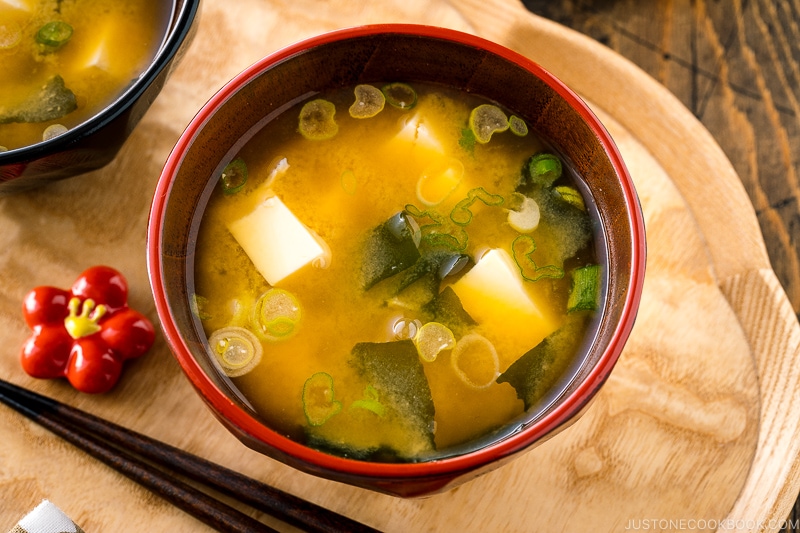

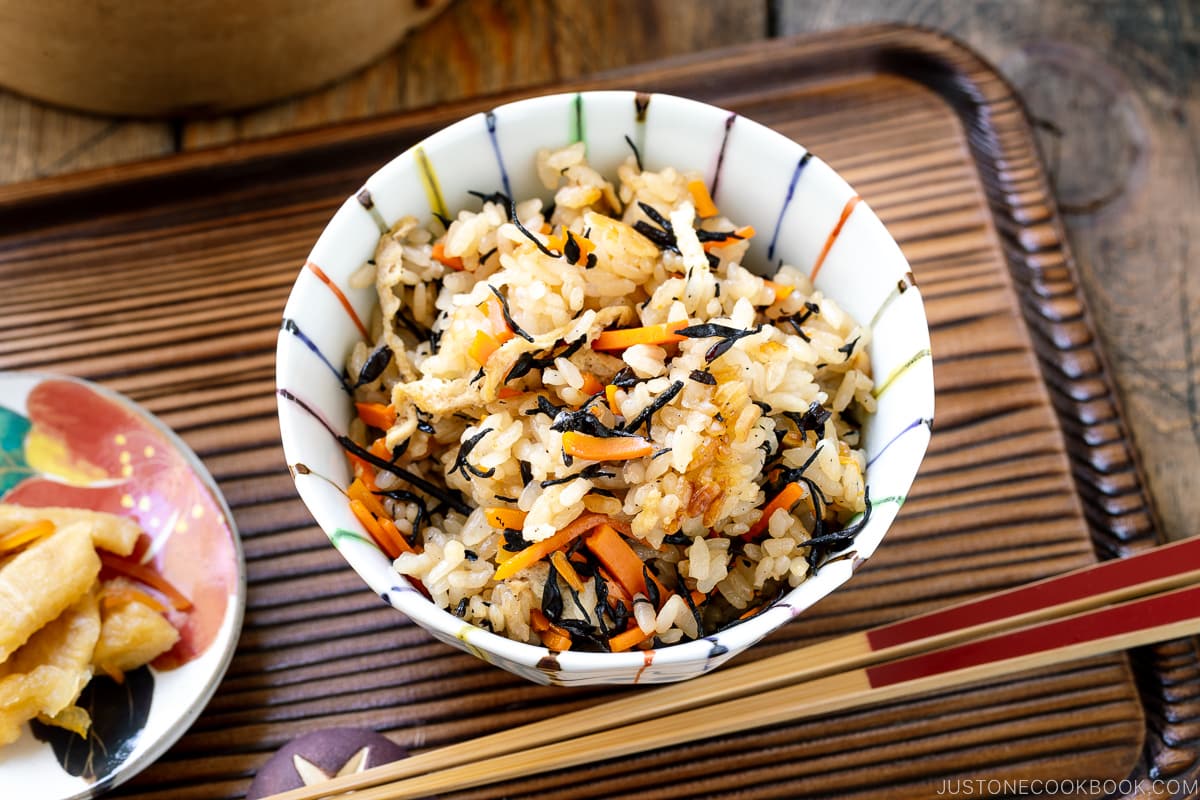
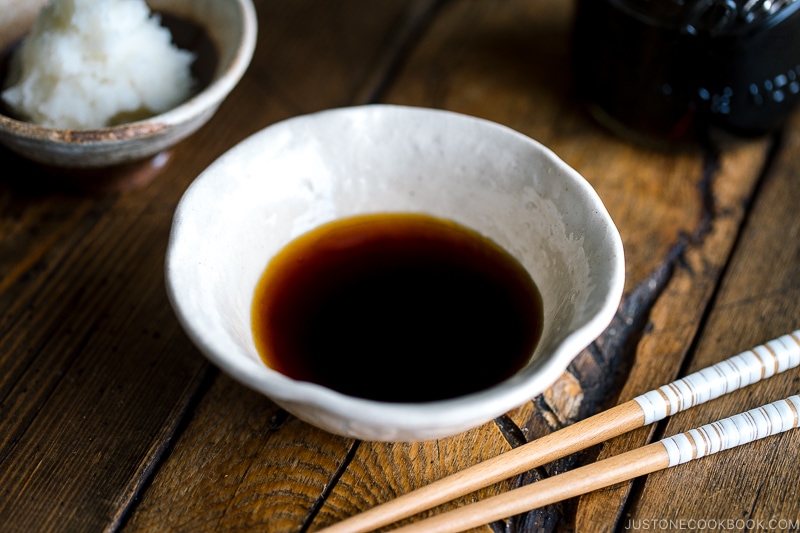
3 Simple Dashi Recipes to Make
To get you started, I’ll share three versatile types of homemade Japanese soup stock to try and why I love them.
- Standard: All-purpose Awase Dashi
- Plant based: Simple Vegan Dashi
- Shortcut method: Quick & Easy Dashi Packet
Let’s dive in!
All-Purpose Awase Dashi
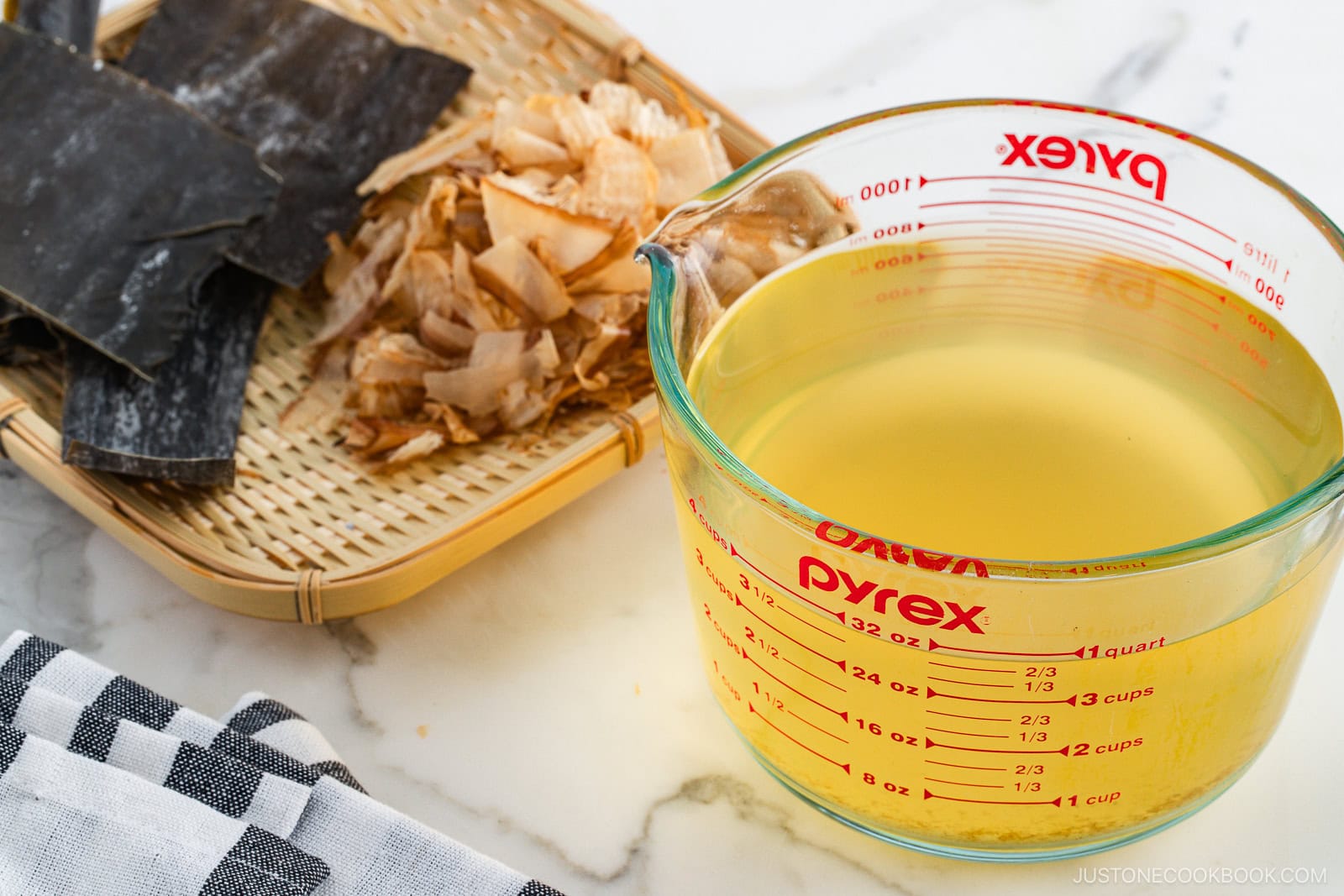
Classic awase dashi (合わせだし) is the most versatile of all. It’s the standard bearer in countless dishes such as miso soup, rice bowls like Oyakodon and Gyudon, Chawanmushi, and simmered dishes.
Why I Love Awase Dashi
- Light, clear broth
- Gentle sweetness
- Smoky, savory depth
- Packed with rich umami
- Enhances (and doesn’t overpower) the natural flavors of your dishes
Ingredients for Awase Dashi
- Kombu (dried kelp)
- Katsuobushi (dried bonito flakes)
- Water
Step-by-Step Photos + Video
⏲️ Ready in just 20 minutes!
Vegan Dashi
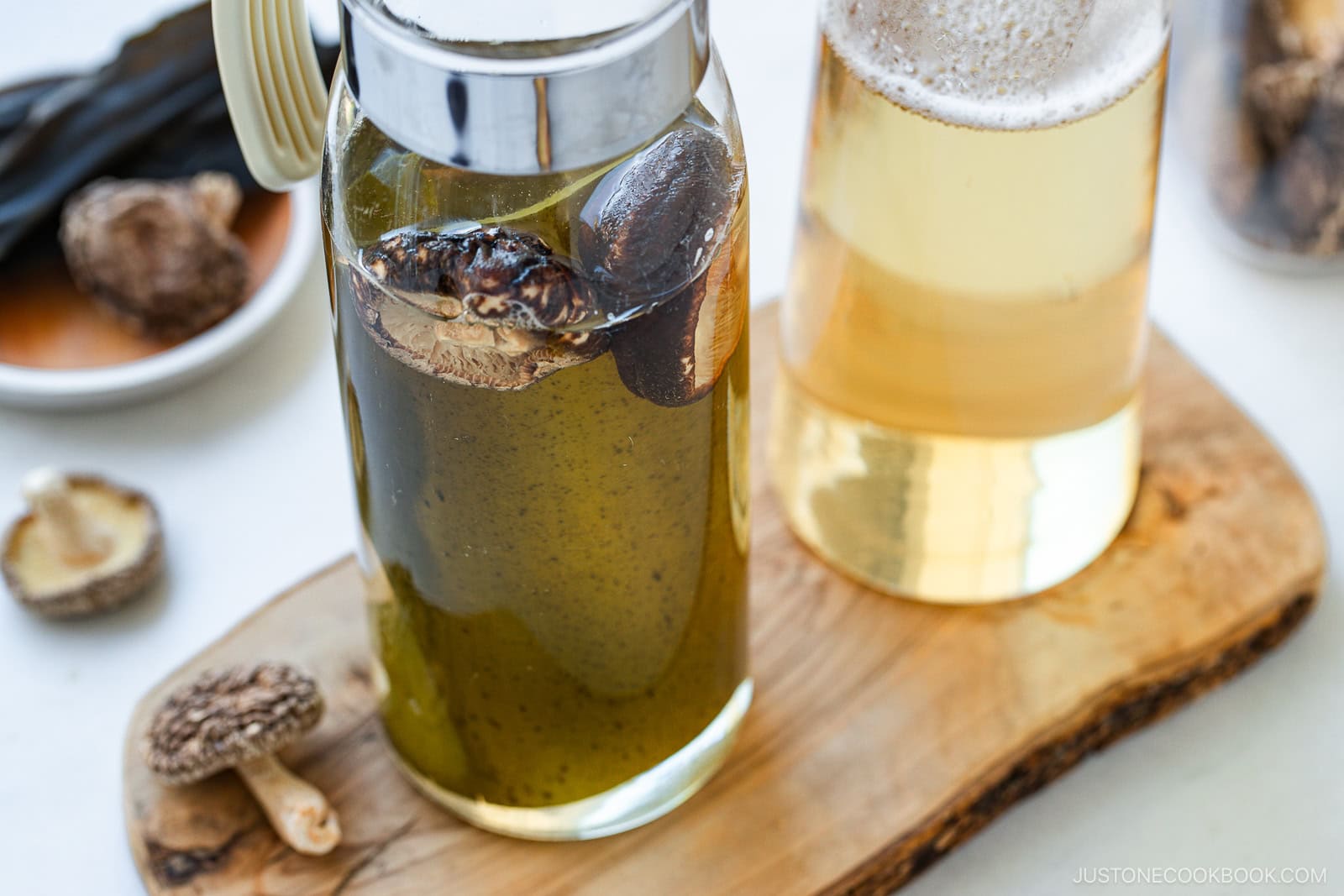
This plant-based soup stock is shiitake kombu dashi (精進だし) and often called vegan dashi. It’s a staple in Japanese kitchens for dishes like Simmered Kabocha Squash and Udon Noodle Soup.
Why I Love Vegan Dashi
- Clean, subtle sweetness
- Earthy depth
- Deep, layered umami
- Full of complexity
- Uses no animal products
Ingredients for Vegan Dashi
- Kombu
- Dried shiitake mushrooms
- Water
Step-by-Step Photos + Video
⏲️ Ready in just 20 minutes!
Quick & Easy Dashi (with Dashi Packet)
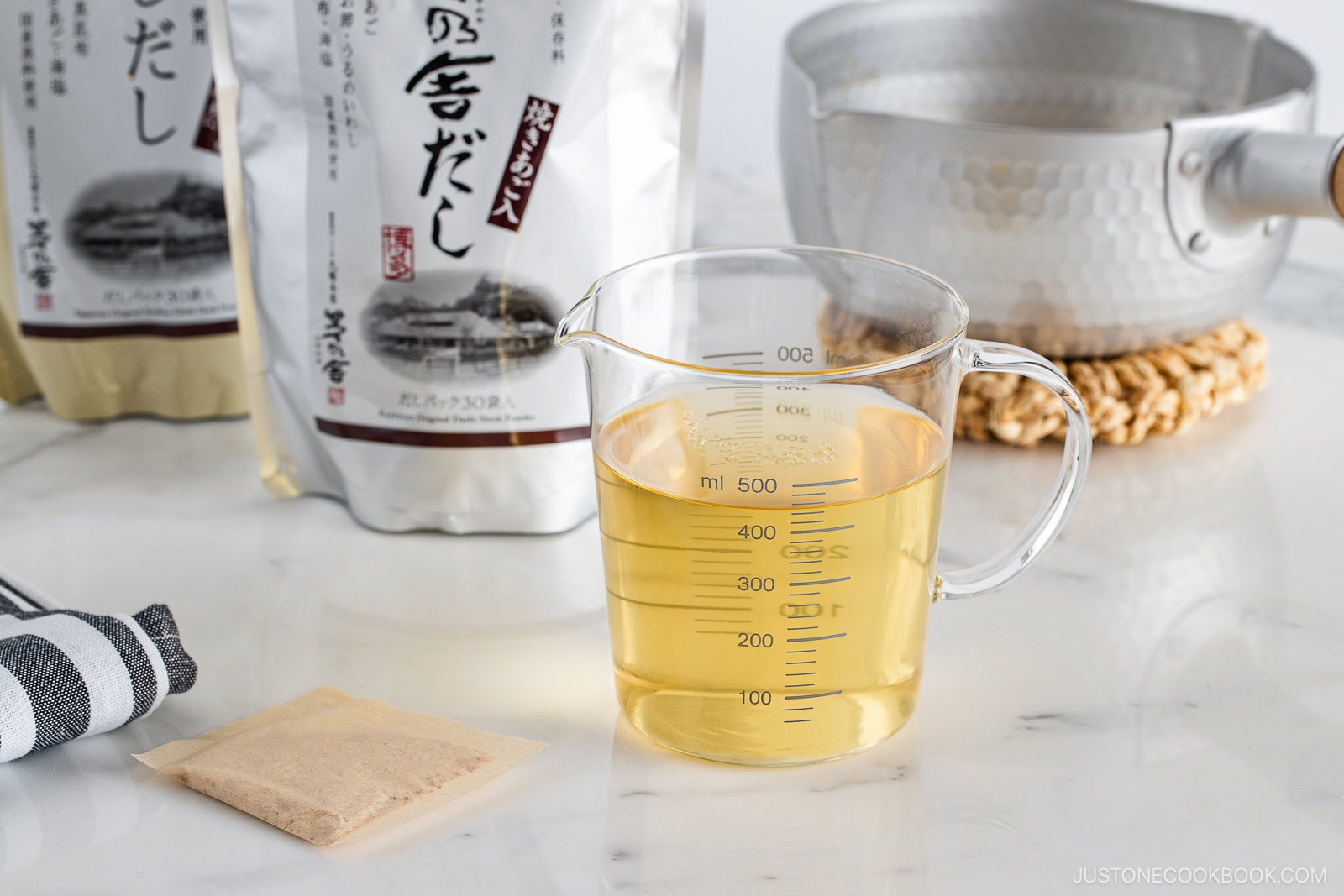
For busy days, I always keep awase dashi packets on hand to make stock. Just brew these little pouches in boiling water for a few minutes, then toss the packet. That’s it! They are much more flavorful than instant dashi powder and so convenient when making Beef Udon or Ochazuke.
Why I Love Dashi Packets
- Steeps just like a tea bag
- No soaking, no straining
- Umami-rich broth with good flavor
- Saves time
- Convenient for busy cooks
Ingredients for Dashi Packet Method
- Dashi packet (🛒 see my favorite brand in the recipe)
- Water
Step-by-Step Photos + Video
⏲️ Ready in just 5 minutes!
Storage and Reheating Tips
To store: Store in a bottle or mason jar and keep in the refrigerator for 3–5 days or in the freezer for 2 weeks.
To reheat: Heat gently until warm.


